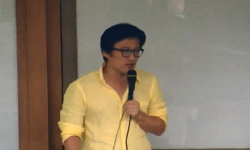본고는 연행 필담의 클리셰와 미장센을 중심으로 논의를 전개한 바, 연행 필담을 비롯한 연행록은 ‘연행 지식ㆍ정보의 수집ㆍ정리 및 확대ㆍ재생산’과 밀접한 관련을 맺는다. 이는 연행 ...
http://chineseinput.net/에서 pinyin(병음)방식으로 중국어를 변환할 수 있습니다.
변환된 중국어를 복사하여 사용하시면 됩니다.
- 中文 을 입력하시려면 zhongwen을 입력하시고 space를누르시면됩니다.
- 北京 을 입력하시려면 beijing을 입력하시고 space를 누르시면 됩니다.
부가정보
국문 초록 (Abstract)
본고는 연행 필담의 클리셰와 미장센을 중심으로 논의를 전개한 바, 연행 필담을 비롯한 연행록은 ‘연행 지식ㆍ정보의 수집ㆍ정리 및 확대ㆍ재생산’과 밀접한 관련을 맺는다. 이는 연행 필담에 등장하는 중국 술잔과 관련한 ‘一日三百盃’, 杭州 西湖의 풍경을 대표하는 ‘三秋桂子十里荷花’에서 보인다. 모두 홍대용 일행과 항주 선비들의 교류와 관련이 깊으며, 이후 연행 필담과 연행록에 두루 수용되기에 이른다. 더욱이 담초의 훼손에 해당하는 은닉ㆍ도말ㆍ절취ㆍ소각 등의 행위는 한족과 만주족의 미묘한 관계와 갈등 양상을 집약적으로 보여준다. 한편 『熱河日記』의 삼액은 이후 연행록과 필기 및 유서에 다양한 변모양상을 드러낸다. 『열하일기』 가운데 왕민호의 언급을 그대로 수록하기도 하고, 내용을 재구성하는 방식도 등장한다. 이와는 달리, 삼액을 수용하면서 각종 문헌 등을 인용하고 자신의 견해를 피력하며 변증을 시도한다. 다른 한편으로 박지원과 왕민호의 필담처럼 삼액을 필담의 소재로 활용하기도 한다. 또한 ‘娛尸’는 중국의 장례 문화를 오랑캐 풍속의 대표적인 사례로서 연행록에 등장하는데, 이는 홍대용과 반정균의 필담에서 입체적으로 드러난다. 이후 연행록에는 ‘오시’를 다양한 형태로 표현하고 있는 바, 대다수는 오랑캐 문화로 비판적인 입장이지만, 비판적 시선을 거두고 객관적인 자세로 기록하기도 한다. 따라서 연행 필담에는 진부하고 상투적인 주제와 내용에 해당하는 클리셰와, 독창성과 차별성을 강조하기 위해서 다양한 장치를 활용하는 미장센이 드러난다. 연행 필담에 등장한 미장센은 이후 클리셰로 점차 변모하는 양상을 보인다. 이는 클리셰와 미장센의 콘텍스트성을 의미하는 것으로, 향후 연행 필담뿐 아니라 연행록을 이해하는데 중요한 사안이다.
다국어 초록 (Multilingual Abstract)
This study develops its discussion focusing on the cliché and mise-en-scéne found in Yeonhaeng Pildam (conversation by writing on a journey). Yeonhaengrok including Yeonhaeng Pildam is closely associated with ‘the collection, organization, extensi...
This study develops its discussion focusing on the cliché and mise-en-scéne found in Yeonhaeng Pildam (conversation by writing on a journey). Yeonhaengrok including Yeonhaeng Pildam is closely associated with ‘the collection, organization, extension, and reproduction of knowledge and information about traveling’. This is seen in ‘ililsambaekbae(一日三百盃)’ related to Chinese drinking glasses and ‘Samchugyejasiprihahwa(三秋桂子十里荷花)’ representing the scenery of the West Lake in Hangzhou appearing in Yeonhaeng Pildam. All were deeply associated with the exchange between Hong Dae-yong’s party and Hangzhou scholars and came to be accepted to Yeonhaeng Pildam and Yeonhaengrok extensively later. Moreover, acts like concealment, smearing, theft, or incineration which correspond to the damage of Damcho show intensively the subtle aspects of relationship and conflict between the Han and the Manchus. Meanwhile, Samaek in 『Yeolha Ilgi』 later revealed various changes in Yeonhaengrok, notes, or wills. Wang Min-ho’s mentions in 『Yeolha Ilgi』 are included just as they are or in reorganized ways, too. Unlike that, while accepting Samaek, they also cited various literatures, presented their opinions, and attempted to dialectize. On the other hand, Park Ji-won or Wang Min-ho used Samaek as the subject matter of their Pildam. In addition, ‘娛尸(Osi)’, Chinese funeral culture, appears in Yeonhaengrok as a representative example of barbarian custom, and this is revealed multilaterally in Hong Dae-yong and Ban Jeong-gyun’s Pildam. After that, ‘Osi’ was expressed in various forms in Yeonhaengrok, and most of them were critical about it as barbarian culture, but some wrote about it objectively taking away their critical perspective. Therefore, Yeonhaeng Pildam includes the cliché corresponding to trite and conventional themes or contents and also mise-en-scéne utilizing various devices to put emphasis on originality and differentiation. The mise-en-scéne that appeared in Yeonhaeng Pildam was gradually changed to the cliché afterwards. This means the contextuality of the cliché and mise-en-scéne, and it is a crucial part to understand not only Yeonhaeng Pildam but Yeonhaengrok as well later.
목차 (Table of Contents)
- 1. 머리말
- 2. 연행의 클리셰와 미장센
- 3. 클리셰와 미장센의 콘텍스트성
- 4. 맺음말
- 1. 머리말
- 2. 연행의 클리셰와 미장센
- 3. 클리셰와 미장센의 콘텍스트성
- 4. 맺음말
동일학술지(권/호) 다른 논문
-
- 동양한문학회(구 부산한문학회)
- 김성진(Sung Jin Kim)
- 2023
- KCI등재
-
- 동양한문학회(구 부산한문학회)
- 이송희(Song Hee Lee)
- 2023
- KCI등재
-
- 동양한문학회(구 부산한문학회)
- 양흥숙(Heung-Sook Yang)
- 2023
- KCI등재
-
- 동양한문학회(구 부산한문학회)
- 신재식(Jae-Sik Shin)
- 2023
- KCI등재





 KCI
KCI 스콜라
스콜라


